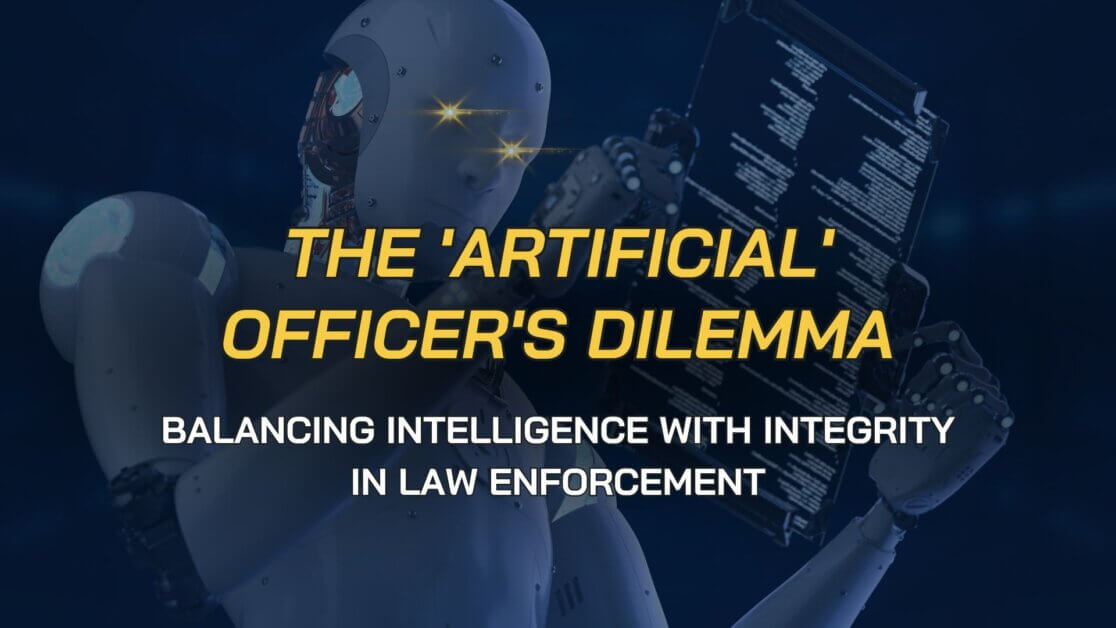Today’s case from the Eighth Circuit is an interesting one, mainly because it involves a wannabe lawyer who may or may not be involved in sex trafficking. Before we dive in to this crazy case, let’s review the preparation of a warrant with a special focus on establishing probable cause using hearsay: There are three key components to a search warrant: (1) particularity of the descriptions of what is to be searched and what is to be seized; (2) probable cause to believe that the items sought are (a) connected with criminality, and (b) presently in the space to be searched. A deficiency in any area will render the warrant unconstitutional and invalid.
When obtaining information to establish Probable Cause, there are two types of information: (1) first-hand information and (2) second-hand (or hearsay) information.
First Hand Information is any information which is derived from the law enforcement affiants’ own personal knowledge. A judge may consider this information at face value, without any further inquiry regarding its reliability, because law enforcement officers are presumed to be credible and their information is presumed to be reliable1.
Second Hand or Hearsay Information is any information which is not derived from the law enforcement affiants’ own personal knowledge, but from any other source. Before a judge may consider hearsay information, he must inquire regarding its reliability or the credibility of its source.
Some Methods to Establish the Credibility of a Source include:
- Identifying the source of the hearsay information as a fellow police officer. Obviously, police officers are presumed to be credible sources of information. Make sure to identify the source of hearsay information as a fellow officer in the affidavit.
- Identifying the source of the hearsay information as a crime victim, a witness to the criminal activity at issue, or an “average” citizen tipster. These persons are also presumed to be credible sources of information. Make sure to identify these sources as such in the affidavit.
- Identifying the source of the information, even if not named in the affidavit, as known to the police, and as having provided true, accurate, and/or reliable information in the past. A conclusory statement that the person has provided such information in the past is entitled to only slight weight, so it is important to provide at least some details regarding the nature of the prior information and whether it has led to seizures of evidence, arrests, and/or convictions. Note, however, that a conclusory allegation stating only that the informant is reliable is inadequate.
- Where significant details of the information is independently corroborated by the police, on their own or through other credible sources, it is considered reliable. Make sure to note successful corroboration in the affidavit.
Alright enough legal talk for now, let’s dive into the case.
FACTS
In May 2017, Otis Mays, who is not an attorney, approached a married couple at the Hennepin County, Minnesota courthouse, told them he was a lawyer named Chris Harrison, and offered to assist them with some legal issues they were having. The couple hired him, and Mays subsequently defrauded them out of more than $300,000. The couple eventually discovered the fraud and reported Mays to law enforcement. In September 2017, the Bloomington, Minnesota Police Department and the Federal Bureau of Investigation (FBI) commenced a joint investigation into Mays’s alleged fraud.
Later in 2017, the FBI and the Richfield, Minnesota Police Department began a joint investigation into allegations that Mays was involved in a juvenile sex-trafficking ring. In July 2018, Mays’s uncle, Bernard Holmes, met with an FBI agent and a Bloomington Police Department detective who were working on the fraud investigation. Holmes told the investigators that he had heard from more than one person that Mays had defrauded them by pretending to be an attorney. Holmes also told the investigators that Mays “always” had his laptop with him, including when he went to court, and that Mays constantly used it. Holmes then told investigators that he had taken Mays’s laptop without Mays’s permission in April 2018 and still had it in his possession. Holmes also told the investigators that he had accessed the laptop and found on it a file labeled “Evidence” as well as video recordings of Mays having sex with various women. Holmes then mentioned how Mays was “gung-ho” about recovering the laptop and recently had been trying to reclaim it from Holmes, possibly going so far as having someone impersonate a police officer, call Holmes, and leave him threatening voicemails about returning the laptop.
One of the investigators told Holmes that they wanted to obtain the laptop, and Holmes responded that he had it at his current residence and that they could come retrieve it. After the interview ended, the investigators followed Holmes to his residence, and Holmes gave them Mays’s laptop. Fifteen days later, an FBI agent working on the sex-trafficking investigation applied for a search warrant for the laptop, including in the supporting affidavit extensive details learned about Mays during the joint investigations. A federal magistrate judge issued a search warrant that same day. Investigators then discovered what they believed to be child pornography on the laptop.
The government subsequently charged Mays with several child pornography-related offenses and wire fraud. Mays filed a motion to suppress the video recordings discovered on his laptop, arguing that they were the fruit of an illegal warrantless seizure. The district court denied the motion and Mays appealed.
EIGHTH CIRCUIT COURT OPINION
First, Mays claimed that the investigators’ acquisition of his laptop from Holmes constituted an unreasonable seizure under the Fourth Amendment. The Eighth Circuit Court of Appeals disagreed. The warrantless seizure of property is per se unreasonable under the Fourth Amendment unless it falls within an exception to the warrant requirement. In this case, the court held that warrantless seizure of Mays’s laptop was reasonable because: 1) the investigators had probable cause that it contained contraband or evidence of a crime; and, 2) exigent circumstances justified immediately seizing it. The court found that Holmes’s statements to the investigators concerning Mays’s fraud scheme and the file labeled “Evidence” that he had discovered on Mays’s computer made it “fairly probable that evidence of Mays’s fraud would be found on the laptop, furnishing investigators with probable cause to seize it.” The court added that the information provided by Holmes could be deemed reliable because he met with the investigators in person, he admitted to taking Mays’s laptop without permission, and the investigators corroborated some of the information Holmes provided.
In addition, the court found that the investigators had an objectively reasonable belief that exigent circumstances existed which justified the warrantless seizure of the laptop. The court based this finding on the fact that Holmes told investigators that Mays was “gung-ho” about recovering his laptop. In addition, Holmes also told the investigators about threatening-sounding voicemails he had received seeking the return of the laptop to Mays, which one of the investigators suggested sounded as if someone acting at Mays’s directive was impersonating a police officer. The court concluded that with Mays “actively searching” for his laptop, the investigators “risked losing digital evidence” on the laptop “without immediate seizure,” as Mays easily could have removed or destroyed any evidence it contained upon reclaiming it from Holmes. As a result, the court held that the investigators had an objectively reasonable belief that exigent circumstances demanded immediate seizure of Mays’s laptop.
Second, Mays argued that the investigators’ retention of the laptop for fifteen days before seeking a warrant to search it was unreasonable under the Fourth Amendment. The court recognized that while the initial, warrantless seizure of property may be reasonable, the duration of the seizure pending the issuance of a search warrant must also be reasonable. In this case, the court held that while several factors weighed in Mays’s favor, the fifteen-day delay between the seizure of the laptop and the issuance of the search warrant was reasonable. The court based its holding primarily on the fact that several different investigative teams were working a complex investigation related to two distinct crimes: fraud and sex trafficking. In addition, the court noted the considerable effort it took to prepare the affidavit supporting the warrant application, as the affidavit was eighteen pages long and included seven pages of specific information about Mays’s alleged conduct learned by each of the four investigative teams during their respective investigations.
TAKEAWAYS
It’s important to note here that officers were able to seize Mays’s laptop prior to obtaining a warrant because of probable cause and exigent circumstances; obviously there were things on the laptop that Mays would be able to delete or destroy while officers were preparing a warrant. Another important factor here is the time it took to get a warrant after officers had the laptop: In Connecticut, for example, 15 days would’ve been too long; here in CT a warrant “shall be executed within ten days….” And the warrant must be executed sooner if a delay in execution will render the information upon which it is based stale; so be sure to check your local warrant guidelines and remember what type of information you can use to validate your warrant (just like the info Holmes gave officers via the hearsay principle).



